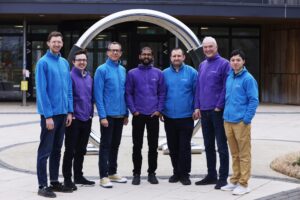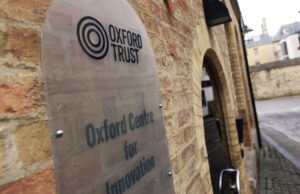Five minutes with Barbara Hammond at the Low Carbon Hub
February 3, 2020

We spoke to Barbara Hammond, founder and CEO of the Low Carbon Hub – a small social enterprise with big aims, now based at our Wood Centre for Innovation (WCFI). “Our vision,“ says Barbara, “is to replace the energy currently produced by Didcot Power Station by powering up, or shifting to renewable energy generation, and powering down by increasing energy efficiency and reducing energy demand across Oxfordshire.”
This vision gives the Low Carbon Hub three key strands to their work – installing renewables; improving energy efficiency of local buildings to reduce energy demand and usage; and innovation. They are working with a variety of project partners to catalyse system change through innovation pilots and that’s where their ground-breaking Project LEO comes in.
A £40m Innovate UK-funded scheme, Project LEO – that’s shorthand for Local Energy Oxfordshire – is run jointly by the Low Carbon Hub and SSEN. “Effectively, it’s an ambitious, innovative and holistic smart grid trial,” says Barbara. “The idea is to transform the way energy is delivered and used by creating a more responsive and flexible electricity grid through local households, businesses and communities.”
An industry first, Project Leo will trial a smart grid model of balancing local demand with local supply and explore how this can support growth in local renewables, electric vehicles (EVs), battery storage, and vehicle-to-grid technology. An energy system for the future.
LEO isn’t the only project the small Hub team of 16 has on the go. They have two “powering down” or energy reduction schemes on their books. Cosy Homes Oxfordshire is a new home retrofit service they are operating with Retrofitworks to create more energy efficient homes. It helps with small jobs like installing insulation and fixing heating systems as well as larger home improvements. And, under the OxFutures umbrella, they are working on a EU-funded project to deliver free energy audits to local SMEs with grants available to install energy-efficient measures like LED lighting, insulation and efficient heating and temperature controls. The aim is to reduce energy bills for businesses, lower CO2emissions and, hopefully, boost the local economy.
On the powering up side, the Low Carbon Hub is already generating 4.4GWH per year from their 44 community renewable schemes – including solar panels on local schools and businesses and a hydro scheme at Sandford. They now have an £8m pipeline of new projects – mainly solar on schools and businesses but now some ground-mount schemes too. These are funded through their Community Energy Fund or, as Barbara calls it, an “Evergreen Fund”, which is open to local investors, big and small. The Hub has 1000 community investor-shareholders and the profits go to support their 30 community shareholders develop local carbon-cutting initiatives – like installing panels on Kirtlington’s village hall. Look out – the Hub are opening pledges for the 2020 share offer on Valentine’s Day and for investment on 10th March.
Spun out of community groups in West Oxford, the Low Carbon Hub started in December 2011. It is made up of two organisations working in co-operation: the Low Carbon Hub IPS and the Low Carbon CIC or Community Interest Company. Investment goes into the IPS to fund the renewable schemes and the surplus is then passed on to the Hub CIC to fund work on local low carbon projects. The structure enables the Hub to develop renewable energy projects as well as support communities to develop their own.
We are pleased to have our first social enterprise under our roof and the Low Carbon Hub is pleased to have a new home at WCFI. They love working in a building that, as Barbara says, “expresses their values with its fabulous green credentials”. If you see an increase in the number of electric bikes on site over the coming months that’ll be the Low Carbon Hub!



